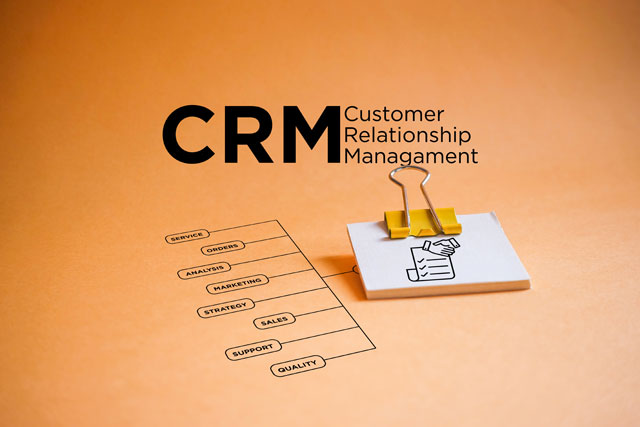In selling your marketing plan to prospective investors, remember you are primarily selling them: (1) You and your brilliance; (2) Your skill set and historical record in business; (3) Your education, common sense and experience as well as that of your key personnel; and (4) The viability of your plan and product and its potential to excel in the marketplace.
Investors generally look for upward of 25% ROI [Return on their Investment] per year. You must be able to prove that you and your company/product can give this type of return to attract funding.
Before you can sell anything to anyone or gain any support for your company or project, you must first select your ideal target investors. You are shopping for them at least as much as they are shopping for you. Decide up front whether you want funding from traditional sources such as banks and stockholders, or if you want to go a non-traditional route with angel investors.
Angel investors are more and more common in the world of private funding for small businesses. Angel investors are investors who more often than not have a background in business and have successfully owned a company or two. Some angel investors want a minimal role in your company while others will want to micromanage you. Be sure to pick the type of investor you want. Conduct an interview when you talk with potential investors because if you cannot get along with them over coffee, how will you get along with them over time while they hold your assets or a portion of them?
For small upstart businesses angel investors are a great financing option because they will take risks with you that a traditional finance company or bank will not take. Be aware, however, that the better you are networked, the more likely you are to connect with a local angel investor. It does matter who you know when it comes to angel investors, but it is not impossible to obtain funding if you don't know a lot of people.
A second word of warning concerning angel investors: before you petition one or agree to go into business with him, make sure you study everything you can about angel investors. Research your prospects and interview them like you would any business partner. Some investor companies are plainly predatory upon under funded small businesses. "In the multitude of counselors there is wisdom" � an appropriate proverb for your relationship with an angel investor.
Finally, you will want to keep in mind the tightness of your presentation to your investors. Remember, they want to see solid stats, accurate market research and a workable marketing plan. Your background will matter to them. Your ability to perform in an ever increasing and productive manner is important to your investor. The professional profile of your advisory council will also matter and weigh heavily in their minds. If your advisors and top staff lack the education, experience, sophistication or necessary talent to mature your company, then your investors will allow these shortcomings to outweigh some of even the best business ideas. Simply put: your company must be positioned, talented and able to deliver to gain the support of an investor or banker.
Plan to Sell
Remember when you speak with investors or bankers, you want to avoid flowery language and prose-styled business and marketing plans. Investors are not concerned that you can schmooze and impress people except in-so-far-as it affects your sales performance. Investors and bankers want to see your plan of action. They want you to spell out specifically your expected results in tangible ways they can project into success.
Many business people mess themselves up when they begin to write too heavy handed or lecture of sorts to their prospective investor. Most of your clients see their relationship with you like this:
Problem �> Service or Solution �> Problem Solved �> Money Saved
It is often said that "people don't plan to fail, they fail to plan." There is no truer saying when it comes to the success of your business and marketing plans; and whether you will win funding from your investors. You must plan to persuade and plan to win.
Presenting Your Marketing Plan
When you actually sit and present to your investors or bankers, be sure to bring your marketing and sales team with you. After all, pitching a sale is their area of expertise. Bring your best people because they may be smoother than you in the initial set up of selling your marketing plan.
In the actual presentation of your marketing plan, be sure to properly prepare for a professional presentation. Make your presentation folders, slides or PowerPoint file ready for rolling out to your clients and prospects. Be sure to hand them each page in your presentation file at the time you go over it. You may intuitively know this, but it's worth saying here anyway for those who don't � if you give them pieces of your presentation ahead of time, you will lose their attention. They will sit and read your pages instead of listening to your presentation.
Zig Ziglar once said that he had estimated the average seminar attendee needed something "light" approximately every 8 minutes during the presentation in order to keep focused. This is a tid-bit worth keeping in mind when you plan your presentation. Study Ziglar's style and practice creating your own presentation style. You can now study his style for free thanks to YouTube. To sharpen your presentation skills you may want to also study some of the other top pros such as Dale Carnegie.
Consistency is the key to brick and mortar marketing and advertising. When people live in communities [which we all do], then you want a reassurance that your marketing budget will not get busted for the year. This article touches on some of the greatest challenges of the brick and mortar.
Yellow Pages
The traditional Yellow Pages seem like a no-brainer; indeed it is. If you plan to move to the top of the pile in the local market, then a Yellow Pages ad is a must-have. If you have a fairly healthy advertising and marketing budget, then make the investment in the Yellow Pages because it will help establish your business in the eyes of the community.
Yellow Pages ads can get quite expensive [upward of $600 locally], but overall it's not a bad dollar spent. Remember, too, that you can get a simple line ad listing at no cost if the best use of your budget is what's in question. The point is: don't let the salesman at the phone company break your marketing budget just because you think a listing in the Yellow Pages is part of what helps to define your company as "normal" or legitimate. If your company's marketing budget can handle it, then great. If not, wait for the right time to incur this expense.
The Yellow Pages is traditionally one of the best local sources you can invest your brick-and-mortar advertising dollars into. After all, mom looks there and so do her friends; it can't be all wrong. In a brick-and-mortar business, the Yellow Pages is as mom and pop as main street itself and $50 per month is really a no-brainer. Despite the electronic revolution and evolution of business information, The Yellow Pages is still very much a business foundation in America.
Direct Marketing and Direct Mail Marketing
More traditional direct marketing is about "beating the pavement" and this is the position of the traditional "door-to-door" salesman. But there comes a point in life where your company needs more reliable sources; you will want more reliable sources because a team of outside sales people has limits and can often suffer from burn out. If your following is strong and you have a follow-the-leader rapport, then you can expect overall better results.
Embarking on a marketing campaign is vital to every business. Along with that effort a strong dose of a "reality check" will help as well. For any marketing effort you should allow at least 90 days and up to 120 days before evaluating the marketing effort or trying to measure the results. Put simply, you cannot reasonably expect to sow and reap in the same day, week or month. Neither can you expect that from any marketing campaign or any sales staff. Relationships take time to develop; reaping requires an upfront effort on the part of your company and its sales team/marketing group.
You will also want to keep in mind that local direct mail marketing yields an average return of 1% to 4%. If you put numbers to those comments, then it looks like this: spend $500 on mailing out flyers to your list and everyone who is on your list is not going to be comfortable receiving your advertisement. So, for your $500 they promise to bring you up to 20 new clients. Most business people find client acquisition for $25 per head to be very reasonable and a decent investment. Depending on your business and industry, however, you may need to re-evaluate your ROI and cost efficiency if your cost per new client rises to $50 or more.
Signs and Sales
Brick and mortar businesses rely much more heavily on signs and sales at the location than do online businesses or consultant service. To reach your local community it is not a question of whether you will need signs for your business. The questions are, what is your sign budget and how soon do you want to order?
Your external signs should be more than one size and in more than one location. People remember what they continue to see. Put your logo and your company's sign in front of their faces as often as possible.
Be sure not to neglect the ever important car/truck business sign. This is quick and easy advertising and marketing. Think about it � everywhere you go you are shoving your company's logo in the face of everyone you ever encounter and thousands of others. For a one time investment of $25 to $50, this is not a bad spend for your marketing dollars. The ROI is high and the signs increase your community visibility.
Your company's sales will also figure into this marketing section. Lot banners, your business sign and giant sales signing are all an important part of your company's marketing activities. Be sure to budget advertising dollars to take care of these types of signings for your company. Grand Openings, seasonal promos and other company events need to be advertised in all of the free local papers and some of the big papers. Even small ads in free papers can run a chunk of change and dent your budget. Make sure you consider all of these events and expenses when looking at how to market your business location in the community.
Google's Local OneBox
OneBox creates and optimizes your website to your location in your community and helps your business stand out to people in your local community when they go online to search for your type of business. Google estimates that nearly 90% of the U.S. population currently goes online to search for a local vendor when they are in need of a particular item or type of business. In essence, Google searches have replaced the old "Let Your Fingers Do the Walking" practice in most households. People are much quicker to type in certain criteria than they are to struggle with flipping through their phone books. Although this fact does not detract from the brick-and-mortar need for a Yellow Pages listing, it is an important fact to consider when looking at how you reach your local community.




























